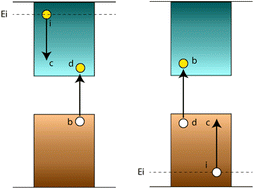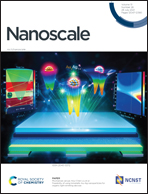Multiple exciton generation in isolated and interacting silicon nanocrystals
Abstract
An important challenge in the field of renewable energy is the development of novel nanostructured solar cell devices which implement low-dimensional materials to overcome the limits of traditional photovoltaic systems. For optimal energy conversion in photovoltaic devices, one important requirement is that the full energy of the solar spectrum is effectively used. In this context, the possibility of exploiting features and functionalities induced by the reduced dimensionality of the nanocrystalline phase, in particular by the quantum confinement of the electronic density, can lead to a better use of the carrier excess energy and thus to an increment of the thermodynamic conversion efficiency of the system. Carrier multiplication, i.e. the generation of multiple electron–hole pairs after absorption of one single high-energy photon (with energy at least twice the energy gap of the system), can be exploited to maximize cell performance, promoting a net reduction of loss mechanisms. Over the past fifteen years, carrier multiplication has been recorded in a large variety of semiconductor nanocrystals and other nanostructures. Owing to the role of silicon in solar cell applications, the mission of this review is to summarize the progress in this fascinating research field considering carrier multiplication in Si-based low-dimensional systems, in particular Si nanocrystals, both from the experimental and theoretical point of view, with special attention given to the results obtained by ab initio calculations.

- This article is part of the themed collection: Recent Review Articles


 Please wait while we load your content...
Please wait while we load your content...